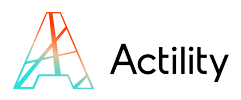

The EU863–870 MHz band is the primary LoRaWAN® frequency plan for Europe and many countries worldwide that follow ETSI EN300.220 regulations. To ensure optimal performance and compliance, it’s essential to understand the frequency allocation, channel configuration, power limits, and data rates.
This article will guides you through all the technical and regulatory parameters of the EU863-870 band, and how ThingPark simplifies deployment.
Before going into deep about LoRaWAN EU863-870 MHz Band, get to know more about LoRaWAN Regional Parameters in our dedicated article.

“Deploying LoRaWAN in Europe isn’t just about frequency compliance – it’s about ensuring seamless, future-proof connectivity at scale. That’s why we’ve embedded EU863–870 optimization into the very core of ThingPark.“
All end-devices must support these three mandatory default channels to broadcast join requests:
| DR | Configuration | Bit Rate (bps) |
|---|---|---|
| 0 | SF12 / 125 kHz | 250 |
| 1 | SF11 / 125 kHz | 440 |
| 2 | SF10 / 125 kHz | 980 |
| 3 | SF9 / 125 kHz | 1760 |
| 4 | SF8 / 125 kHz | 3125 |
| 5 | SF7 / 125 kHz | 5470 |
| 6 | SF7 / 250 kHz | 11000 |
| 7 | FSK 50 kbps | 50000 |
| 8–11 | LR-FHSS (optional) | 162–325 |
| TX Power Index | EIRP (dBm) |
|---|---|
| 0 | +16 |
| 1 | +14 |
| 2 | +12 |
| 3 | +10 |
| 4 | +8 |
| 5 | +6 |
| 6 | +4 |
| 7 | +2 |
| DR | Max MAC Payload (M) | Max App Payload (N) |
|---|---|---|
| 0–2 | 59 | 51 |
| 3 | 123 | 115 |
| 4–7 | 230 | 222 |
| 8/10 | 58 | 50 |
| 9/11 | 123 | 115 |
N = M – 8 (if FOpts field is absent)
| Sub-band | Range (MHz) | Max Duty Cycle | Max ERP |
|---|---|---|---|
| K | 863.0 – 865.0 | 0.1% | 25 mW |
| L | 865.0 – 868.0 | 1% | 25 mW |
| M | 868.0 – 868.6 | 1% | 25 mW |
| N | 868.7 – 869.2 | 0.1% | 25 mW |
| P | 869.4 – 869.65 | 10% | 500 mW |
| Q | 869.7 – 870.0 | 1% | 25 mW |
| Parameter | Value |
|---|---|
| Frequency band | 863–870 MHz |
| Default join channels | 868.10 / 868.30 / 868.50 MHz |
| Min channels supported | 24 |
| Max channels supported | 80 |
| Mandatory data rates | DR0 – DR5 |
| Max EIRP | +16 dBm |
| Duty cycle | ≤ 1% (varies by sub-band) |
| Default RX2 data rate | DR0 (SF12 / 125 kHz) |
| Default RX2 frequency | 869.525 MHz |
With ThingPark Enterprise or ThingPark Wireless, Actility automates regional configuration:
Deploying LoRaWAN in the EU863–870 MHz band involves balancing regional compliance, spectrum efficiency, and device interoperability. With Actility’s proven platform, these complexities are managed transparently—so you can focus on building scalable, reliable IoT networks.

About Actility
Actility, one of the co-inventors of LoRaWAN® technology and a founding member of the LoRa Alliance, is the leader in industrial-grade low-power wide-area network (LPWAN) connectivity and IoT tracking solutions. Actility’s ThingPark™ platform, which supports multi-radio connectivity (LoRaWAN®, NB-IoT, LTE-M), powers the majority of public networks and numerous private and enterprise networks worldwide. Through its subsidiary Abeeway, Actility offers patented ultra-low power, multi-radio trackers and comprehensive indoor and outdoor geolocation services. Additionally, the ThingPark Market boast the largest catalog of LoRaWAN® devices, gateways, and solutions available.
Media contact : marketing@actility.com – https://www.actility.com/contact/
At Actility, we are passionate about unlocking the full potential of IoT for businesses and communities around the world. Join us as we continue to innovate, collaborate, and lead the way in connecting the digital and physical realms through cutting-edge IoT solutions.
© 2025 Actility’s All Rights Reserved